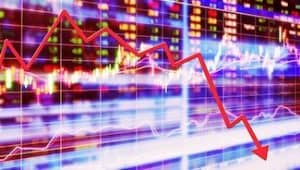 The US Federal Reserve raised rates by 75bps in its June meeting, less than the 100bps some were expecting, but enough to signal that it was willing to do whatever it takes to get spiralling inflation under control. The UK also hiked rates for the fifth time in a row to hit 1.25%, a 13-year high, whilst in a surprise move the Swiss central bank also jumped in with its first increase in 15 years, hiking 50bps to move from –0.75% to –0.25%.
The US Federal Reserve raised rates by 75bps in its June meeting, less than the 100bps some were expecting, but enough to signal that it was willing to do whatever it takes to get spiralling inflation under control. The UK also hiked rates for the fifth time in a row to hit 1.25%, a 13-year high, whilst in a surprise move the Swiss central bank also jumped in with its first increase in 15 years, hiking 50bps to move from –0.75% to –0.25%.
And there are more to come. The European Central Bank (ECB) has indicated plans to raise rates by a quarter point next month, and possibly a bigger jump in September, while the Fed is expected to continue its aggressive policy for the rest of the year with another jump in July.
Bonds battered
The moves, while not unexpected, still had a significant impact on the markets – particularly on the fixed income side, where bond traders were battered by bouncing volatility and investors yanked billions from corporate bond funds as prices plummeted.
“The Fed rate hike was largely anticipated, but did little to calm markets, as sentiment changed from fearing the Fed was moving too slowly to address soaring inflation, to fearing that this and the future rate moves would tip the US economy into recession,” said Dom Holland, US business development at blockchain bond platform LedgerEdge, speaking to The TRADE.
“As market participants scrambled to re-position, they found that buying appetite across asset classes was limited and prices were marked down sharply with little trading happening at each price point.”
This was particularly pronounced in the corporate bond market, where the risk transfer model was already challenged, which not only had to reprice to reflect the new yield levels of the underlying US Treasuries, but also to add in additional spread to reflect the new perception of recession and the effect that would have on the creditworthiness of corporate bond issuers.
“We saw significant outflows from corporate bond funds last week that compounded the move lower,” said Holland. “All corporate bond indices are fast approaching levels last reached at the start of the pandemic and the dramatic re-pricing has been on limited volume as liquidity has been poor.”
Equities impact
The equity markets also had a bad week, with global stocks seeing their worst slide since 2020. The S&P Europe 350, reflecting European equity performance, also saw substantial outflows, losing 4.6% over the week ending 17 June and down 8.93% June to date.
Interestingly, it was the second-largest largest US dollar shorting week on record, according to Goldman Sachs Prime (only behind the week ending 12 June 2008), as managers increased micro and macro hedges amid the sharp market drawdown.
“What does it mean for global equity markets? It becomes clear that the Fed will do whatever it takes to get inflation under control even if it implies slowing the economy meaningfully and/or lead to further market downside. In other words, there is no Fed put anymore which means that there is no cushion on the downside for investors,” Syz Group head of trading Valérie Noël told The TRADE.
However, it’s not all negative.
“One positive development last week came from the ECB Emergency meeting, which led to two decisions: one) The ECB triggered flexible PEPP reinvestments; and two) ECB internal committees were tasked with accelerating the completion of a new anti-fragmentation tool,” revealed Noël.
“Immediately after the news, Italy, Spain and Portugal spread vs. Bund tightened meaningfully. This is a positive development for EU banks and periphery markets and thus a relief for EU equities.”